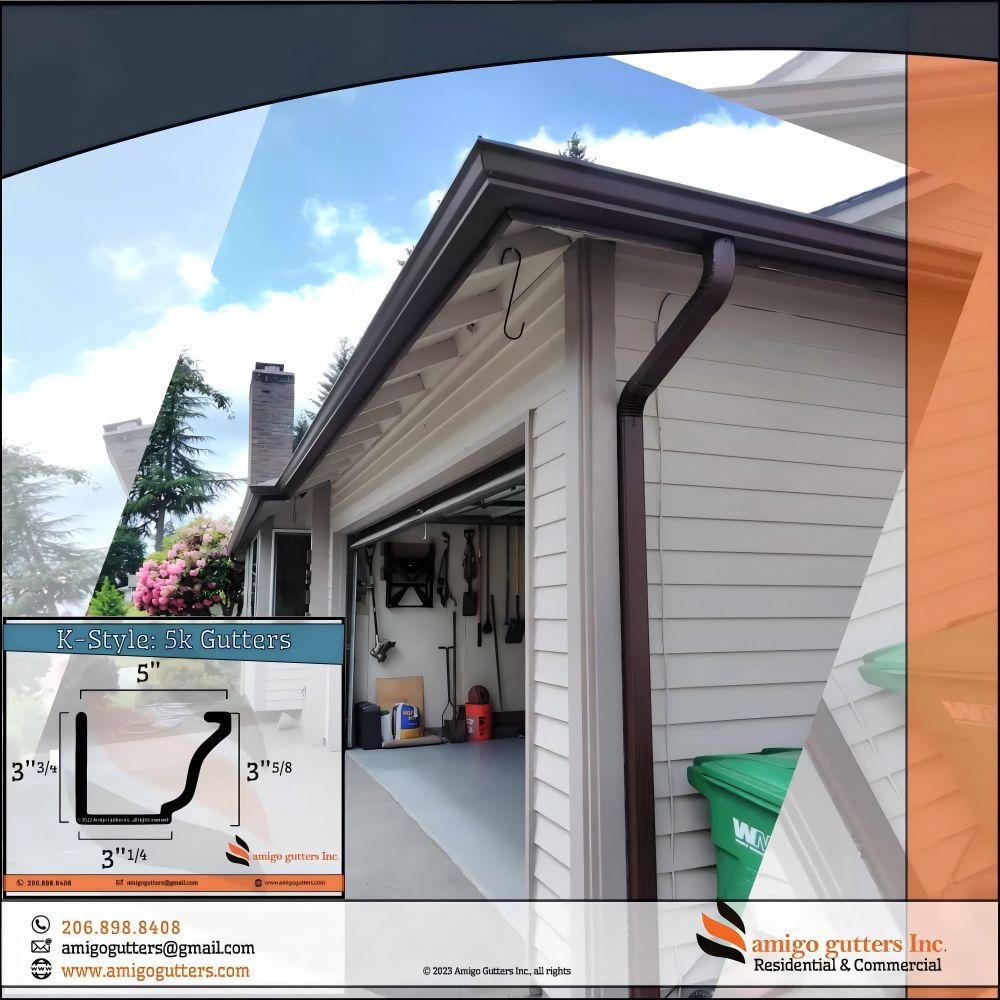Aluminum Profiles in Gutter Drainage Systems
Gutter drainage systems are critical components of modern architecture, designed to channel rainwater away from buildings to protect structural integrity and prevent water damage. Among the materials used for gutters, aluminum profiles have emerged as a preferred choice due to their versatility, durability, and cost-effectiveness. This article explores the application of aluminum profiles in gutter drainage systems, the types of aluminum alloys commonly used, installation and maintenance practices, and the inherent advantages of aluminum in this context.
1. Aluminum Profiles in Gutter Drainage Systems: Applications and Alloy Types
Applications
Aluminum profiles are widely used in gutter systems for residential, commercial, and industrial buildings. These profiles are fabricated into seamless or sectional gutters and downspouts, tailored to fit diverse architectural styles. Key applications include:
Roof Gutters: Installed along roof edges to collect rainwater.
Box Gutters: Integrated into flat or low-slope roofs for concealed drainage.
Downspouts: Vertical pipes that direct water from gutters to drainage points.
Custom Shapes: Aluminum’s malleability allows for bespoke designs, such as decorative gutters for historical buildings.
Aluminum’s lightweight nature simplifies handling and installation, while its resistance to corrosion ensures longevity even in harsh climates.
Common Aluminum Alloys
The performance of gutter systems depends on the alloy composition of aluminum profiles. The most widely used alloys include:
6063-T5: A heat-treated alloy with excellent extrudability, ideal for seamless gutters. It offers a balance of strength, corrosion resistance, and surface finish.
6061-T6: Known for higher tensile strength, this alloy suits heavy-duty applications, such as industrial gutters exposed to mechanical stress.
3003-H14: A non-heat-treatable alloy with superior formability, often used for downspouts and custom bends.
Surface treatments further enhance performance:
Anodizing: Creates a protective oxide layer, improving corrosion resistance and allowing for colored finishes.
Powder Coating: Provides a durable, UV-resistant exterior in various colors, matching architectural aesthetics.
Installation and Maintenance of Aluminum Gutter Systems
Installation Best Practices
Proper installation ensures optimal functionality and longevity:
Preparation:
Measure the roof edge to determine gutter length and slope (typically 1:500 for water flow).
Select appropriate brackets and hangers based on roof type (e.g., fascia-mounted for pitched roofs).
Cutting and Joining:
Use non-ferrous blades to cut aluminum profiles, preventing contamination.
Connect sections with rivets or silicone-sealed joints to ensure watertight seams.
Sloping and Alignment:
Install gutters with a slight downward slope toward downspouts to prevent water pooling.
Secure brackets at 24–36-inch intervals to avoid sagging.
Downspout Integration:
Position downspouts at corners or low points, using elbows to direct water away from foundations.
Extend downspouts at least 5 feet from the building base.
Sealing and Testing:
Apply waterproof sealant at joints and end caps.
Test the system by simulating rainfall or using a hose to check for leaks.
Maintenance Guidelines
Aluminum gutters require minimal upkeep but benefit from periodic inspections:
Debris Removal: Clean leaves and debris biannually to prevent clogs. Use a gutter scoop or blower.
Leak Checks: Inspect seams and joints after heavy storms. Reapply sealant if necessary.
Corrosion Monitoring: While aluminum resists rust, check for white oxidation spots in coastal areas. Clean with mild detergent and water.
Downspout Flushing: Ensure downspouts are clear by pouring water through them.
Avoid abrasive tools or acidic cleaners, which can damage protective coatings.
Advantages of Aluminum Profiles in Gutter Systems
Aluminum’s unique properties make it superior to traditional materials like steel, vinyl, or copper:
Corrosion Resistance:
Aluminum naturally forms an oxide layer that protects against rust, even in salty or humid environments. Unlike steel, it does not require galvanization.
Lightweight and Easy Installation:
Aluminum gutters weigh 50–70% less than steel, reducing labor costs and structural strain. Their flexibility simplifies customization for complex roof designs.
Durability and Longevity:
High-quality aluminum gutters can last 20–30 years with minimal maintenance. They withstand temperature fluctuations (-80°F to 300°F) without warping.
Aesthetic Flexibility:
Available in pre-coated colors or customizable finishes, aluminum gutters blend seamlessly with modern and traditional architecture.
Cost-Effectiveness:
Aluminum is more affordable than copper or zinc while offering comparable performance. Lower maintenance costs add to long-term savings.
Sustainability:
Aluminum is 100% recyclable without quality loss. Recycling requires only 5% of the energy needed for primary production, aligning with green building standards.
Low Thermal Expansion:
Aluminum expands minimally with temperature changes, reducing the risk of joint failure compared to vinyl.
Conclusion
Aluminum profiles have revolutionized gutter drainage systems by combining practicality, durability, and aesthetic appeal. From versatile alloy options to straightforward installation and eco-friendly benefits, aluminum outperforms traditional materials in nearly every aspect. By adhering to proper maintenance practices, building owners can ensure their gutter systems remain functional and visually appealing for decades. As urbanization and climate challenges grow, aluminum’s role in sustainable water management will only become more pivotal, solidifying its status as the material of choice for modern drainage solutions.
Peak Fasten Tech has been dedicated in developing and manufacturing aluminum profile for gutters for over 10 years. Our Al profile are highly praised by gutter brands and installers with high quality and convenient installation. Please feel free to contact us whenever there is query for aluminum profiles or gutter solutions.

 English
English  Español
Español  Português
Português  русский
русский  Français
Français  日本語
日本語  Deutsch
Deutsch  tiếng Việt
tiếng Việt  Italiano
Italiano  Nederlands
Nederlands  ภาษาไทย
ภาษาไทย  Polski
Polski  한국어
한국어  Svenska
Svenska  magyar
magyar  Malay
Malay  বাংলা ভাষার
বাংলা ভাষার  Dansk
Dansk  Suomi
Suomi  हिन्दी
हिन्दी  Pilipino
Pilipino  Türkçe
Türkçe  Gaeilge
Gaeilge  العربية
العربية  Indonesia
Indonesia  Norsk
Norsk  تمل
تمل  český
český  ελληνικά
ελληνικά  український
український  Javanese
Javanese  فارسی
فارسی  தமிழ்
தமிழ்  తెలుగు
తెలుగు  नेपाली
नेपाली  Burmese
Burmese  български
български  ລາວ
ລາວ  Latine
Latine  Қазақша
Қазақша  Euskal
Euskal  Azərbaycan
Azərbaycan  Slovenský jazyk
Slovenský jazyk  Македонски
Македонски  Lietuvos
Lietuvos  Eesti Keel
Eesti Keel  Română
Română  Slovenski
Slovenski  मराठी
मराठी  Srpski језик
Srpski језик 


